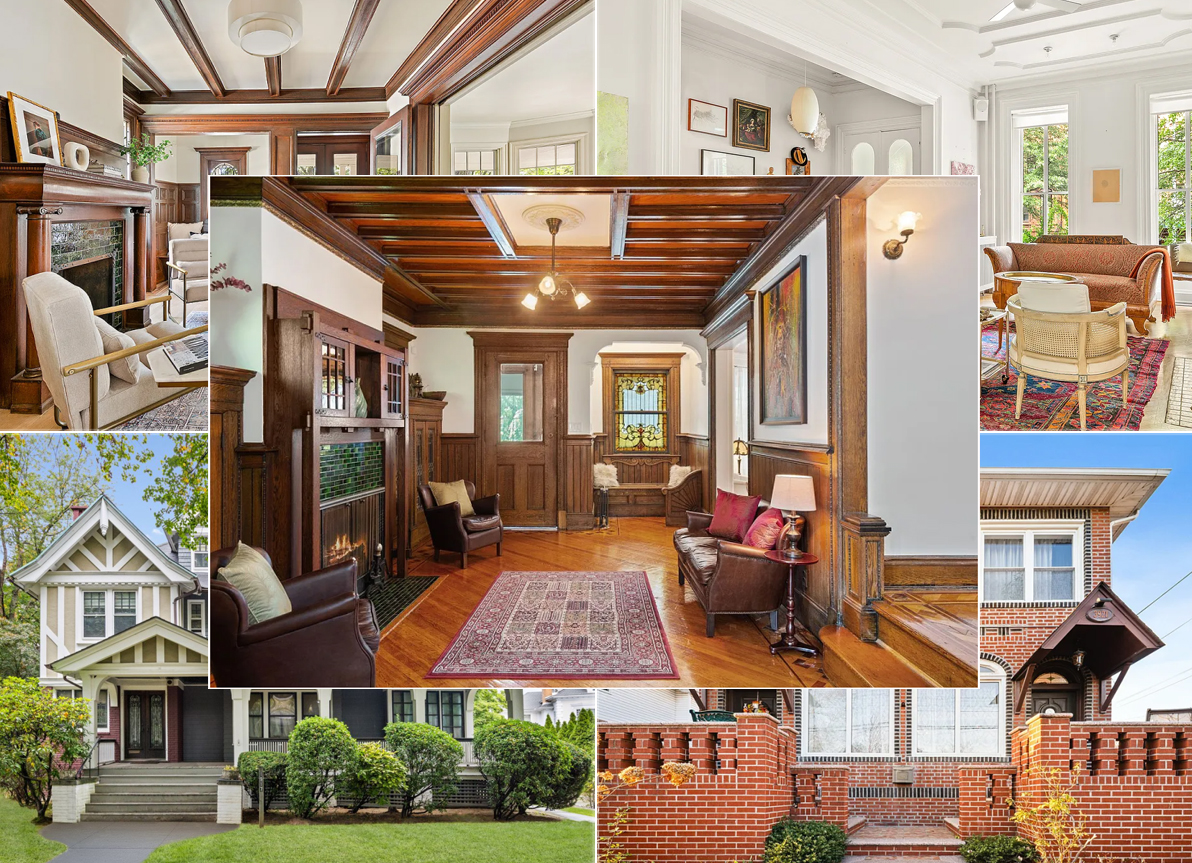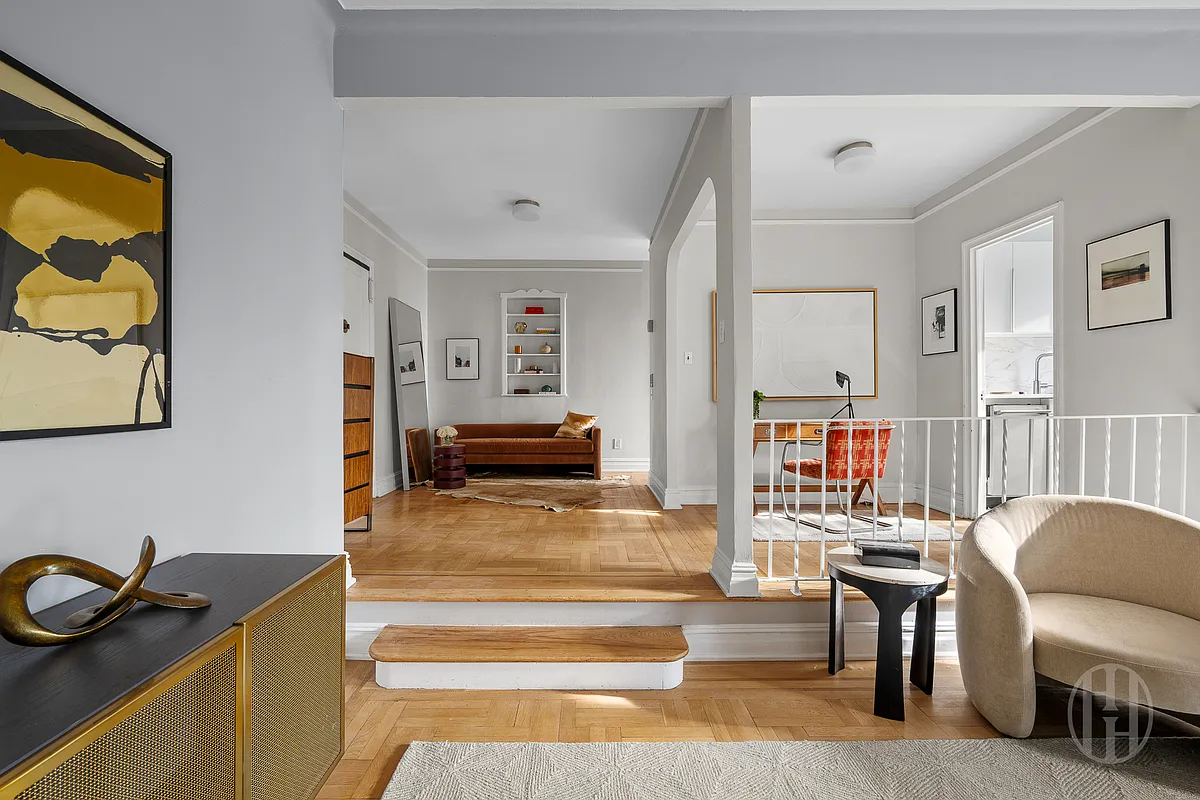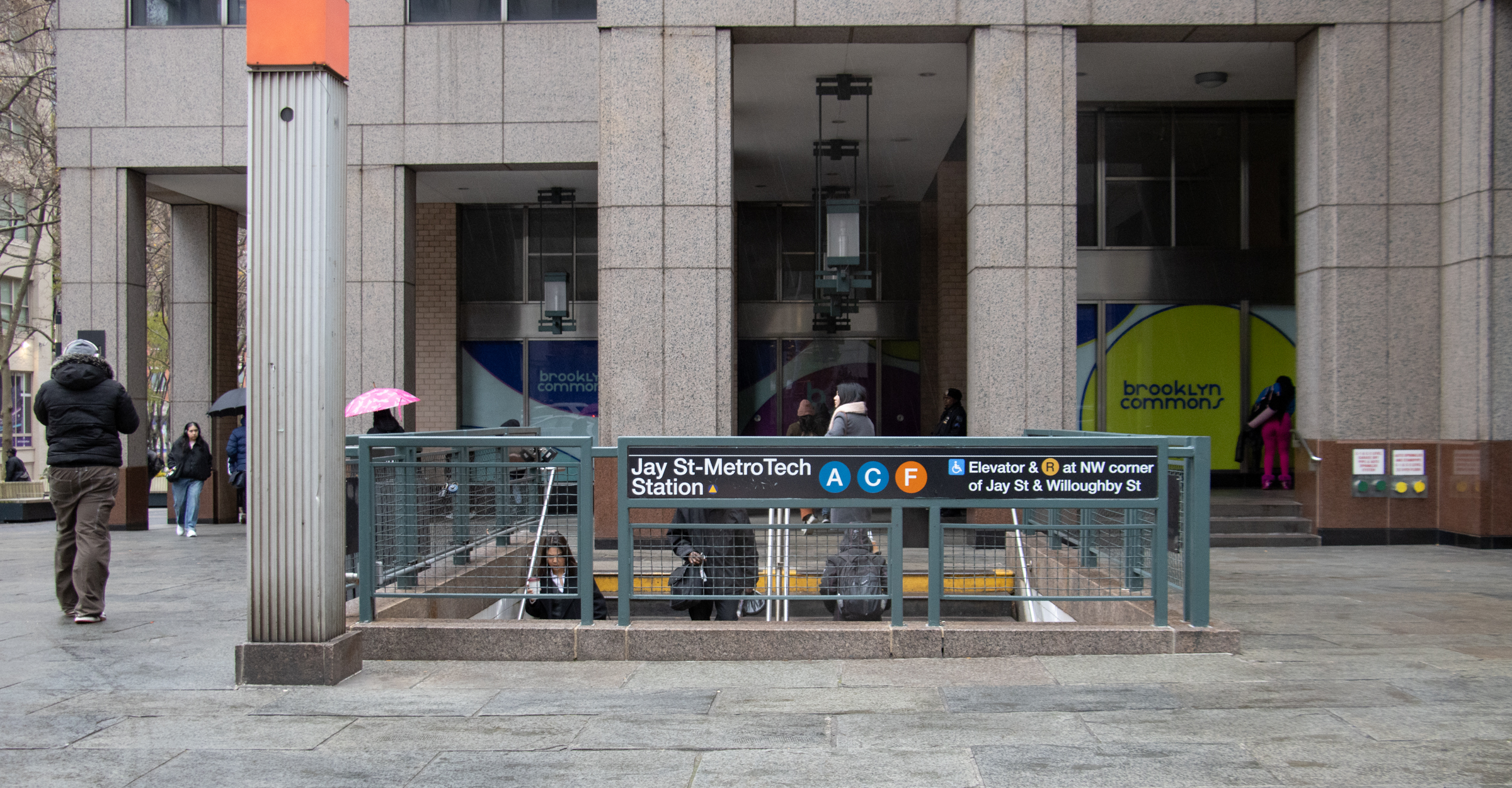Walkabout: It's Time for Arts and Crafts
When we think of the Arts and Crafts Movement in the United States, Brooklyn seldom comes to mind as a hotbed of A&C style. We think of suburban bungalows, the Midwest and California, not the city. Did the Arts and Crafts movement pass us by? First, some background. The American Arts and Crafts Movement is…


When we think of the Arts and Crafts Movement in the United States, Brooklyn seldom comes to mind as a hotbed of A&C style. We think of suburban bungalows, the Midwest and California, not the city. Did the Arts and Crafts movement pass us by?
First, some background. The American Arts and Crafts Movement is an off-shoot of the British movement of the same name. I could spend a couple of columns on them alone, but let me summarize by saying that the philosophical principles of John Ruskin are at the core of the movement.
He was one of Victorian England’s most influential thinkers; a poet, artist, environmentalist, scientist, and social critic. In an age of fussy and gaudy materialism, urbanization and industrialization, he advocated simplicity and a return to nature and a reverence for the past.
His ideas were taken up by the Pre-Raphaelite Brotherhood, a group of artists, craftspeople and writers, whose works were inspired by Medieval and Renaissance themes, such as courtly love and knightly duty, and the satisfaction of making something by hand.
The greatest of these artists was William Morris. Morris, a complicated and interesting man, decided to forgo a fine arts career, and concentrate on the decorative arts. Using his home, called Red House, designed by architect Phillip Webb, as a canvas, Morris and friends designed and produced a wealth of prints for fabrics, rugs and wallpaper, as well as furniture and other decorative objects.
Their credo was simplicity, taking their ideas from the simple furniture lines of the medieval keep, the country cottage, and their own fertile imaginations. The prints, drawn from the flora and fauna around Morris’ country home, were unlike anything else produced at the time, and enhanced the simple furniture.
Although designed with an egalitarian everyman in mind, the handmade products were actually too labor intensive to be affordable to anyone other than the upper classes. However, they proved to be extremely popular, and an international movement, called Arts and Crafts, was born.
Its influence was seen not only in decorative furnishings, but also in architecture, especially in the choices of building materials, and designs. Phillip Webb’s Red House kicked off an amazing period of creativity in building design in England, which spread to other parts of Europe, and to North America.
In America, the Arts and Crafts Movement took hold in several different ways. Gustaf Stickley, a Binghamton, NY furniture maker, was inspired by the simple shapes and materials of Morris’ furniture, which he saw on a trip to England.
Using plain quarter sawn oak, simple lines, tenon and key construction and simple upholstery, he created the first Craftsman line of furniture in 1898, operating from upstate Eastwood, NY. By 1900, the Mission furniture line was a fully developed, distinctively American idea, further developed by Stickley’s publication of The Craftsman, a magazine of ideas, design and architecture.
From the pages of The Craftsman came Stickley’s first bungalow designs, emphasizing smaller cozier houses, natural materials, and open rooms, with built-in cupboards, seating, and storage. These ideas would be embraced and modified by many architects and builders, including, most famously, the Greene brothers in California, Purcell and Amslie in the Midwest, and Frank Lloyd Wright.

The American Arts and Crafts Movement occurred at time when America was in the Progressive Era, in the early years of the twentieth century before World War I. This was a time of embracing the best of America’s past, and it is no coincidence that the popularity of Neo-Colonial architecture and furnishings takes place at the same time.
The A&C Movement celebrated a simpler time, before Victorian excesses, when handmade objects and furniture were displayed with pride. The popularity of all kinds of pottery, hand hammered copper pieces, and rustic looking lamps and decorative items, which were made by communities of artisans all over the country, are an important part of the Arts and Crafts Movement.
In the new suburbs and towns across America, this new architecture took hold big time, with Craftsman bungalows available in kits from Sears, and entire communities of modest, middle class homes spreading across the country. The movement was especially popular in the West, where the open spaces invited vernacular architects to create their own variations.
In California, the designs of Greene and Greene in Pasadena are perhaps the apex of the Arts and Crafts style. All in all, the Arts and Crafts Movement in the United States gave birth to the bungalow, the ubiquitous Four-Square, and its regional variations, including the classic Chicago bungalow, East Coast suburban Tudor cottages, Southwestern Pueblo style adobes, the Japanese inspired homes of Greene and Greene, and California’s storybook cottages. All emphasize simple designs, with honest wood details, all places where families thrive and the American ideal of the home being the reward of hard work was born.
So what about Brooklyn? We see the Arts and Crafts influence more on the interiors of our buildings, in the tall oak paneling and choice of fireplace tiles and mantles in many Renaissance Revival row houses, and in the beamed ceilings of free-standing houses in Victorian Flatbush.
The architects working in our neighborhoods at this time were not ignorant of styles and trends. Working within the strictures of a 20′ urban plot does not lend itself to too much variety, but inside?

The two-family Kinko houses of Crown Heights North and Park Slope, built between 1910 and 1915, were A&C cottages inside, with a more open layout, built-ins, and Craftsman style lighting fixtures, paneling and tile inside.
Many of Axel Hedman’s limestones also feature A&C details, often mixing interior Neo-Colonial details, such as French doors, leading to rooms with five foot high oak wainscoting, plate rails and other classic A&C details. Victorian Flatbush is home to bungalows and Four-squares, as are parts of Bay Ridge, Bensonhurst and other parts of southern Brooklyn.
Other architects are more influenced by the English building tradition of Arts and Crafts. Row houses in Clinton Hill, and a special row in Crown Heights North illustrate this part of the tradition well, although they are few and far between.
The distinctive use of brick as a building and trim material often heralds a more English style A&C house, and the Crown Heights Cottages are in a class by themselves. The decorative styles of the movement can be used in a variety of homes, and the clean, uncluttered simplicity of Mission furniture lends itself nicely to a spare, modern aesthetic, adding natural warmth to what can sometimes be a cold look.
All in all, the Arts and Crafts Movement is still very much with us, a versatile and valuable style again for the 21st century. I only scratched the surface of this important movement. See Flickr for more photos.



[Photos by Suzanne Spellen]





Correction- This building is on Lafayette Ave. between Classon and FRANKLIN AVE.
Eh, I would certainly classify the Pratt houses as Arts and Crafts. Has anyone seen an unrenovated interior?
The part of upstate where I came from didn’t have too many Arts and Crafts homes, although the larger towns have a bungalow or two. We have more farm Victorians and earlier Colonial homes. I wish I had known about Stickley and Arts and Crafts when I lived up there, and Syracuse was only a couple of hours away. I would have also loved East Aurora NY, home to the Roycrofters, a colony of Arts and Craftspeople, outside of Buffalo. The Roycrofters were an important part of the A&C Movement in the US, and an interesting bunch in their own right. I just couldn’t include everyone in the piece.
hmmm..surprising number of former upstaters posting… below is one Syracuse link (the newsletters give some examples of local arts and crafts styles.) I don’t remember seeing much in terms of arts and crafts houses in the city (North Side, South Side, University area), but there are more stand alone homes as you get to the suburbs (maybe some off East Genesee??)and the Stickley factory is fun to visit
http://www.acscny.org/index.html
Anyway, love this style, was delighted to see Greene houses in Pasadena recently and thanks again, MM, for an interesting post
Are these guys on the Willoughby side of the Pratt Campus considered this style? I’v always wondered about them.
http://www.flickr.com/photos/yancey/3460230177/
Oof- forgot to add, one of my favorite architectural styles. Once rented an apartment in an incredible arts and crafts house in Binghamton too. there were quite a few up there.
I once lived in Binghamton. Found a great arts and crafts bench- the arms had been cut down, but the back was signed in the wood- not a label- Charles Stickley. Had to give it to dear friends when I moved. Still kicking myself.
Thanks Pete. You know your Stickley! I googled “craftsman farms” and was directed to a great virtual tour of the house in NJ that I recalled from my visit years ago.
Posters who like craftsman should check it out.
admittedly i haven’t lived there since i was a teenager so i could be totally wrong about the arts & crafts presence in syracuse 🙂
okay, Gustav with brothers had Stickley Brothers in Binghamton but then opened his own Craftsman in Syracuse.
Craftsman Farms is what he established in NJ, but HQ was moved to NYC and later failed.
Surprised you say that, duckumu, if look around there should be plenty of examples of bungalows…at least there are in Utica where I was from.